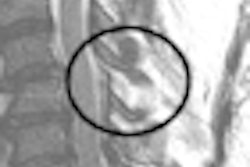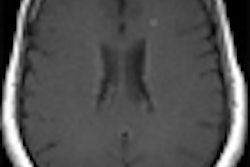Today's teens may have a reputation as slackers addicted to video games and iPhones, but teen researchers are making a difference in medical imaging with research studies presented at medical conferences in the past month, including one at this week's American Thoracic Society (ATS) meeting in New Orleans.
In the study, a California student found a way to reduce the number of chest x-rays ordered for children using home mechanical ventilation systems when they're hospitalized for pneumonia. Meanwhile, in a presentation at the Society for Pediatric Radiology (SPR) meeting in April, two New Jersey high school students found that entertainment systems designed to distract children having MRI exams may not be as helpful as clinicians believe.
The studies serve as examples of tangible benefits achieved by providing research opportunities to inquisitive students, regardless of their age or formal education level.
Impact of chest x-rays
Wynton Kun was on summer vacation during his sophomore year at La Salle High School in Pasadena, CA. Bored with playing video games, he told his mother he wanted to do something of value. Sheila Kun, a pulmonary registered nurse at Children's Hospital Los Angeles, spoke with her mentor, pediatric pulmonologist Dr. Thomas Keens, who offered to work with Kun.
After considering a number of projects recommended by Keens, Kun selected one to which he could relate and felt he had the background to perform. "My mom works with children who have to use home mechanical ventilation systems," he said. "These are complex patients, usually with conditions such as central hypoventilation syndrome, chronic lung disease, or neuromuscular disease. They are often admitted to the hospital with pneumonia during viral winter seasons. Because of my mother's work, I was interested in and felt a connection with these patients."
Children's Hospital Los Angeles had no protocols with respect to the frequency and timing of chest radiographs taken of children with lung disease admitted as inpatients with simple community-acquired pneumonia. So Kun decided to investigate how chest radiographs affected treatment.
The most difficult part of the research was discussing how to structure the study, according to Kun. "The hospital had an established protocol for ordering chest x-rays for children without compromised lungs," he said. "But they did not have an established protocol for children with chronic lung disease who acquired pneumonia. I thought that one of the most challenging aspects of the project was trying to define criteria to determine the usefulness of a chest radiograph. We spent many hours to answer this question. Formulating the premise of the study was more difficult than doing the actual data collection."
Kun used the hospital's electronic medical records and radiology information system databases to identify 28 children using home mechanical ventilation systems who were admitted as inpatients between July 2007 and June 2008. These children, ranging in age from 8 months to 16 years, had a total of 165 chest radiographs performed as inpatients.
Kun studied anonymized patient records to determine if any changes in respiratory treatment were ordered within 24 hours after a chest radiograph had been performed. He determined that only one-third of the exams resulted in a change of treatment. Nor were the majority of discharges contingent on exam findings.
The ATS gave Kun a travel scholarship to attend its annual meeting this week and make a poster presentation, as well as a one year ATS-in-training membership. He graduates at the end of May and will be attending the University of California, Davis as a biology major. His goal: to become a physician or a clinical research professional.
Impact of MRI entertainment systems
Meanwhile, an enterprising pair of New Jersey high school students looked into the effects of entertainment systems utilizing video goggles and earphones in a study presented at the SPR meeting held in Boston April 13-17. They wanted to find out if the systems had any impact on the need for sedation of pediatric patients having brain MRI exams, as well as whether they increased workflow and reduced the amount of in-room exam time.
Sadhana Subramanian of Freehold Borough High School in Freehold and Madhumita Parmar of the Union County Academy for Allied Health Sciences in Scotch Plains worked on the research with the aid of Dr. Rajesh Krishnamurthy, a staff radiologist at Texas Children's Hospital in Houston.
They collected data relating to 529 brain MRI exams performed at Texas Children's Hospital between March and May 2007, when entertainment systems were not used, and compared the results to data from 631 patients who received the same procedure between March and May 2009, when entertainment systems were available. Subramanian and Parmar collected and evaluated data based on patient age, type of sedation, duration of examination, and turnaround time between exams.
The students determined that the entertainment system was used by approximately 45% of the patients in 2009. For the total patient cohort of 1,160, availability of the system had little effect on sedation rates. Forty-three percent of the children were sedated in the 2007 time period, compared with 43% in 2009.
However, there was a statistically significant difference among teenagers 12 to 17 in age. Sedation declined by 8.7%, from 25.3% in 2007 to 17.6% in 2009. The difference in turnaround time between exams was approximately two minutes less in 2009, which was not statistically significant, and could not be proved to be a result of the entertainment system, according to Subramanian, who presented the study.
By Cynthia E. Keen
AuntMinnie.com staff writer
May 17, 2010
Copyright © 2010 AuntMinnie.com


.fFmgij6Hin.png?auto=compress%2Cformat&fit=crop&h=100&q=70&w=100)





.fFmgij6Hin.png?auto=compress%2Cformat&fit=crop&h=167&q=70&w=250)











